Overview
This article outlines seven strategies that small and medium businesses can implement to safeguard their value during crises. These strategies encompass:
- Conducting thorough financial assessments
- Implementing interim management solutions
- Developing strategic crisis management plans
- Leveraging technology
- Establishing clear communication strategies
- Applying robust risk management practices
- Fostering employee engagement
Each strategy is supported by evidence and examples that demonstrate their effectiveness in enhancing resilience and operational efficiency during challenging times.
Introduction
In an unpredictable business landscape, small and medium enterprises confront unique challenges that can jeopardize their very existence. Comprehensive crisis management consulting emerges as a vital lifeline, equipping organizations with the essential tools and strategies needed to navigate turbulent times.
By concentrating on critical areas such as:
- Financial assessments
- Interim management
- Robust communication strategies
Businesses can not only respond effectively to immediate threats but also establish a foundation for long-term resilience.
As case studies and expert insights illustrate, proactive planning and the integration of technology solutions play a pivotal role in enhancing operational efficiency and fostering stakeholder trust.
This article explores the multifaceted approach to crisis management, highlighting actionable strategies that empower businesses to not merely survive, but thrive in the face of adversity.
Transform Your Small/ Medium Business: Comprehensive Crisis Management Consulting
Crisis consulting is vital for small and medium enterprises confronting unforeseen challenges. By leveraging comprehensive consulting services—such as turnaround and restructuring consulting, interim management, and financial assessment—organizations can accurately identify vulnerabilities and implement customized strategies aimed at business value protection tailored to their specific needs. This proactive approach not only facilitates a prompt emergency response but also lays the groundwork for long-term resilience.
Collaborating with seasoned advisors from Transform Your Small/Medium Business provides companies with invaluable insights that significantly enhance operations and bolster emergency preparedness. As highlighted by the General Manager of Production, one of the most critical lessons learned is the power of collaboration in cross-functional teams, which enhances teamwork during crises.
A recent case study involving a gubernatorial candidate exemplified how effective emergency response strategies, including focused communication and stakeholder engagement, stabilized approval ratings and reshaped media narratives, ultimately leading to a successful election outcome. Furthermore, recent data indicates that organizations utilizing emergency response consulting services are better positioned for business value protection against disruptions, as evidenced by a project phase that encountered a 2.5-month power outage.
The demand for emergency management consulting is on the rise, with a commitment to helping clients achieve sustainable growth at the core of these services. Additionally, the 'Rapid30' plan has proven effective in swiftly identifying issues and implementing solutions, as noted by a client who stated, 'Within 100 days of meeting the SMB team, my company was in a better position financially and strategically than it had been in years.
Conduct Thorough Financial Assessments: Preserve Cash and Reduce Liabilities
Conducting thorough financial evaluations is essential for organizations facing crises. This process involves a detailed analysis of cash flow, the identification of unnecessary expenditures, and the evaluation of liabilities. By focusing on specific sectors for cost-cutting, companies can efficiently maintain essential cash reserves, which are critical for supporting operations during challenging periods.
Our team advocates for a reduced decision-making cycle during the turnaround process, enabling your team to take decisive action for business value protection. Regular financial reviews not only facilitate quick adaptations to evolving circumstances but also enhance overall solvency.
As Jamie Munday, EY Global Quantitative Services Leader, observes, "The necessity for adequate cash flow is intensified during a difficult time," emphasizing the urgency of proactive financial oversight. For instance, during the COVID-19 pandemic, governmental financial measures provided essential cash flow assistance, allowing many enterprises to sustain operations despite economic declines.
Moreover, resources like the Caflou cash flow academy can enhance CFOs' knowledge in cash flow management, equipping them with tools to navigate crises effectively. Our client dashboard offers real-time analytics to continually assess your organization's health, ensuring that you can monitor performance and adjust strategies as necessary.
In 2025, businesses that prioritize comprehensive financial assessments can expect improved cash flow preservation rates, thereby enhancing business value protection and ultimately leading to greater resilience and stability in the long run. Data from past financial downturns indicate significant effects on the dollar and interest rates, highlighting the importance of thorough evaluations in today's economic landscape.
Implement Interim Management Solutions: Stabilize Operations During Crises
Temporary leadership solutions are crucial during crises, offering the necessary guidance to stabilize operations effectively. By appointing experienced interim managers, organizations can ensure that critical decisions are made swiftly, leveraging their extensive expertise to implement changes that enhance operational efficiency. These leaders not only drive immediate improvements but also instill confidence among stakeholders and employees, fostering a sense of stability in uncertain times.
Transform Your Small/ Medium Enterprise provides comprehensive turnaround and restructuring consulting services, including interim oversight, financial evaluation, and bankruptcy case coordination tailored for small to medium enterprises.
Statistics reveal that nearly a quarter (23%) of project resources in the industrial goods and services sector are now directed towards interim leadership efforts, underscoring the growing acknowledgment of their value. Moreover, interim managers typically charge daily rates between 1,000-2,000 euros, presenting a cost-effective alternative to permanent hires while delivering immediate expertise. This strategic approach not only sustains cash flow but also contributes to business value protection, preparing companies for long-term success.
The 'Rapid30' plan exemplifies how temporary leadership can lead to transformative organizational experiences, emphasizing client satisfaction and professional success. Case studies demonstrate the positive impact of temporary leadership on operational stability during emergencies, showcasing how these leaders can adeptly manage challenges and guide organizations toward recovery. In addition, our financial evaluation and bankruptcy case oversight services ensure that companies are equipped to proactively manage their financial well-being.
Develop Strategic Crisis Management Plans: Align Resources for Effective Response
Developing tactical emergency management strategies is crucial for companies aiming for business value protection while efficiently handling unexpected difficulties. These plans should delineate specific roles, responsibilities, and procedures tailored to various crisis scenarios. By aligning resources and establishing robust communication protocols, organizations can facilitate a coordinated response that minimizes operational disruptions.
Moreover, incorporating real-time analytics into these plans allows for continuous monitoring of organizational health, enabling quick adjustments based on current data. Utilizing tools such as dashboards and data analytics software can enhance decision-making processes. Regular updates and practice drills are essential, as they enable businesses to remain agile and ready for any eventuality.
Statistics show that organizations with clearly outlined emergency response strategies have notably better success rates during emergencies, which underscores the importance of business value protection through proactive planning. For instance, Andrew Weins, owner of JDog Junk Removal & Hauling, reflects on the lessons learned from military service regarding risk-taking in entrepreneurship, advocating for a culture that embraces calculated risks to foster growth and resilience.
This principle corresponds with the need for having a contingency plan, as taking informed risks can result in innovative solutions during difficult times. As almost 600,000 companies in the United States shut down annually, according to chamberofcommerce.org, the necessity for efficient planning during difficult times becomes even more evident, especially for small to medium enterprises aiming for lasting success.
To start creating or improving your emergency response plan, consider performing a comprehensive evaluation of possible risks, testing different theories, and setting up a clear communication strategy that can be activated during an emergency.
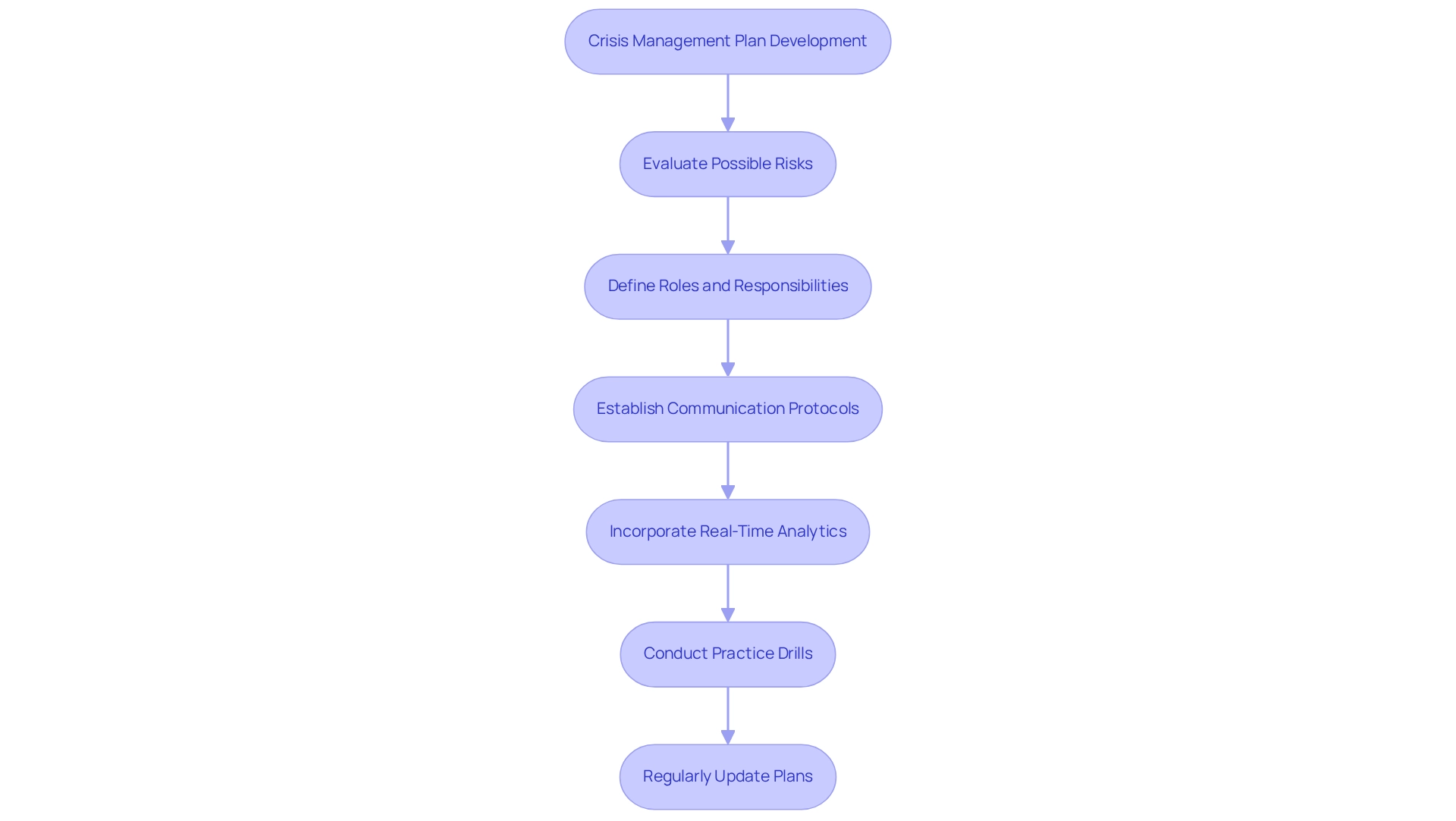
Leverage Technology Solutions: Enhance Operational Efficiency in Crisis Situations
Employing technology solutions is essential for enhancing operational efficiency during challenging periods. Advanced tools such as emergency response software, communication platforms, and data analytics play a crucial role in streamlining processes and improving decision-making capabilities. By implementing these technologies, organizations can achieve real-time monitoring of situations, foster effective communication among teams, and ensure that vital information is readily accessible. This proactive approach not only aids prompt emergency response efforts but also strengthens overall operational resilience.
As organizations increasingly acknowledge the significance of continuity planning, investments in emergency response software are on the rise, demonstrating a commitment to preserving operational integrity during difficult periods. The emergency management software market is anticipated to expand notably from 2024 to 2032, with North America expected to secure a considerable share of 39.2% in 2025. This trend highlights the importance of utilizing technology to manage challenges efficiently and ensure business value protection by safeguarding organizational resources.
Moreover, by taking a pragmatic approach to data, companies can test hypotheses and make informed decisions swiftly, ensuring they can adjust to evolving circumstances. As Ronald Reagan once said, 'The greatest leader is not necessarily the one who does the greatest things. He is the one that gets people to do the greatest things.' This viewpoint underscores the significance of efficient guidance during challenging situations. Additionally, smaller companies are progressively providing tailored solutions to address niche sectors, illustrating the varied methods organizations can adopt to improve their response plans. Insights from the case study titled 'Investment Trends in Crisis Management Software' further illustrate the increasing dedication to operational resilience and business value protection, as organizations recognize the necessity of incorporating these solutions into their risk management approaches. Crucially, implementing lessons learned from previous emergencies can greatly enhance future reactions, and utilizing a client dashboard for real-time business analytics can offer essential insights into business health.
Establish Clear Communication Strategies: Maintain Stakeholder Trust During Crises
Developing clear communication strategies is vital for maintaining stakeholder trust during challenging situations. Organizations must prioritize transparency by providing regular updates to employees, customers, and investors. Openly discussing the challenges faced and the measures being implemented to address them fosters trust and confidence among stakeholders.
For instance, the 2011 Sony PlayStation Network outage emphasized how insufficient cross-functional coordination worsened the situation, illustrating that communication breakdowns can significantly impact emergency response outcomes. By utilizing multiple channels, businesses can effectively disseminate messages, thereby reducing misinformation and uncertainty.
In 2022, Cloudflare's major outage caused by a configuration error highlighted the necessity of prompt and clear communication in emergency management. Experts emphasize that clear communication not only mitigates panic but also reinforces stakeholder confidence, ultimately leading to a more resilient organization.
Moreover, outdated emergency plans can result in extended recovery times and increased harm during emergencies, underscoring the importance of having current communication strategies established. Continuous improvement through post-crisis reviews is crucial; this process allows organizations to evaluate what worked and what didn’t, ensuring that lessons learned translate into better preparedness for future challenges.
As John F. Kennedy noted, 'In a difficult situation, be aware of the danger—but recognize the opportunity,' and Martha Beck stated, 'Man is not imprisoned by habit.' Significant transformations in him can be achieved by turmoil—once that turmoil can be acknowledged and comprehended. These insights emphasize the transformative potential of crises and the significance of effective communication methods.
To enhance future communication efforts, organizations should consider implementing a structured framework for conducting post-crisis reviews, ensuring that they learn from past experiences to improve their strategies.
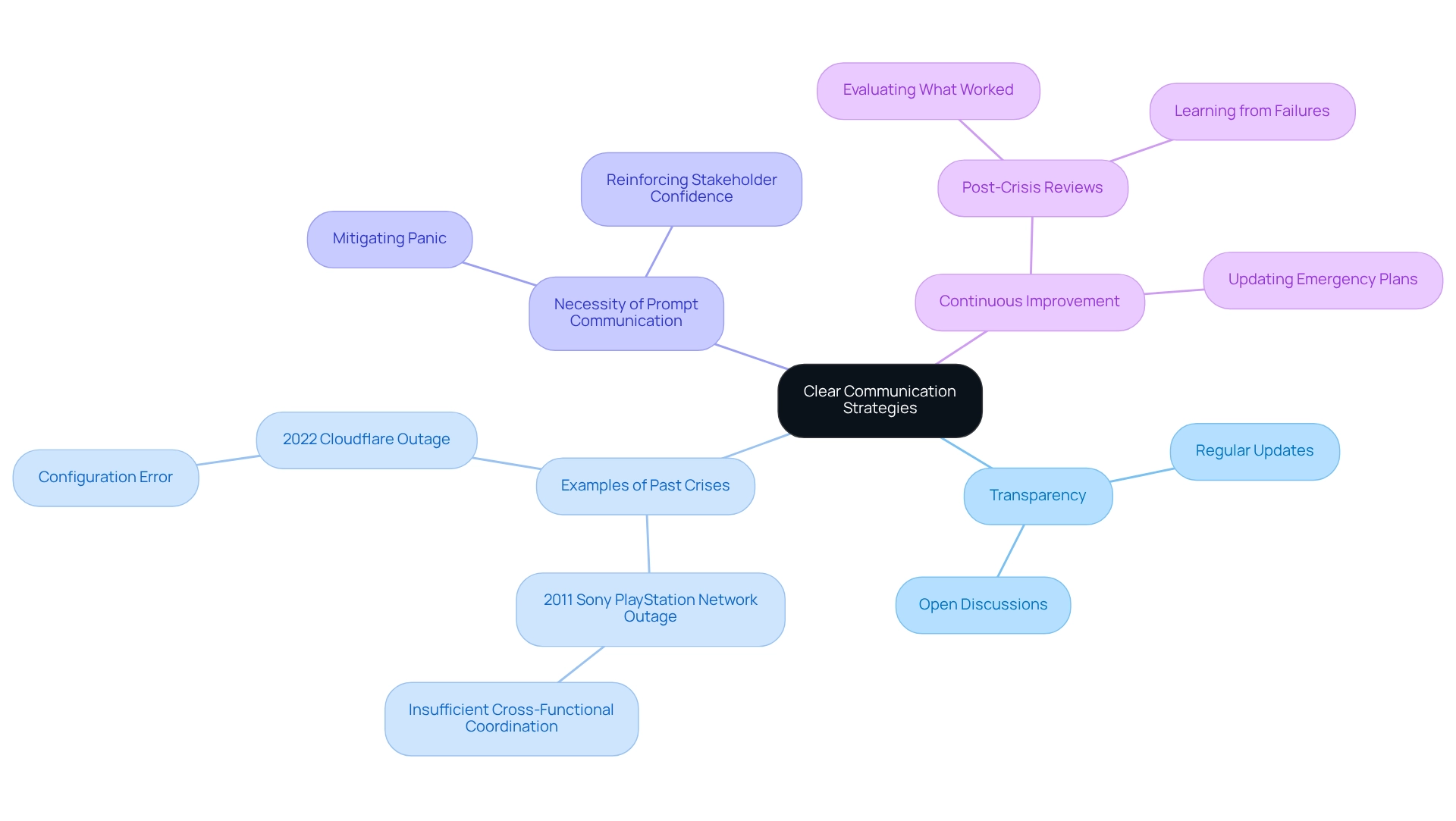
Implement Robust Risk Management Practices: Identify and Mitigate Potential Threats
Applying robust risk control strategies is essential for organizations aiming to effectively identify and mitigate potential dangers. This process encompasses:
- Conducting regular risk assessments
- Closely monitoring external factors
- Crafting comprehensive contingency plans
By proactively addressing vulnerabilities, organizations can significantly diminish the likelihood of crises and lessen their impact when they occur. A strong risk framework not only provides business value protection but also bolsters overall organizational resilience.
Recent statistics reveal that only 4% of companies have ceased evaluating third-party risks, down from 10% and 8% in previous years, underscoring a growing recognition of the importance of continuous risk assessment. Moreover, insights from risk experts highlight that effective risk evaluation methods during emergencies are vital for enduring stability.
As companies navigate through 2025, prioritizing efficient risk management strategies will be crucial for business value protection, helping to prevent emergencies and ensure sustainable growth. According to the PwC Pulse Survey, merely 33% of risk leaders plan to increase overall spending in the next 12 months, indicating a cautious budgeting approach that emphasizes cost-effective investments and automation.
Additionally, with 52% of surveyed cybersecurity professionals reporting an uptick in attacks compared to last year, the need for ongoing risk assessments becomes even more pressing. Integrating real-time data and analytics into risk management strategies will enhance the ability to identify and address potential threats, empowering organizations to make informed decisions swiftly and efficiently.

Foster Employee Engagement: Boost Morale and Performance During Crises
Fostering employee engagement during crises is essential for enhancing morale and sustaining performance. Leaders must prioritize open communication, ensuring that employees feel heard and valued. Providing support and recognizing individual contributions can significantly boost commitment and productivity, even in challenging times. As Gallup states, 'Organic growth occurs within existing business through an engaged and high-performing workforce,' emphasizing the critical link between engagement and business value protection. Research indicates that companies with a thriving corporate culture experience over four times higher revenue growth, underscoring the importance of engagement strategies tailored to the unique needs of the workforce.
Moreover, initiatives that promote teamwork and collaboration not only enhance resilience but also empower organizations to navigate crises more effectively. Furthermore, organizations that implement mass personalization strategies—customizing experiences to meet individual employee needs—can see engagement levels rise by at least 23%, reinforcing the connection between engagement and performance. By fostering a positive work environment, organizations can enhance job satisfaction and profitability, ultimately resulting in sustainable growth.
To successfully execute these approaches, CFOs should concentrate on cultivating a culture that appreciates employee contributions and encourages teamwork, thereby ensuring business value protection and preparing their organizations to flourish during difficult periods. In addition, utilizing real-time business analytics can assist leaders in making informed choices that improve employee engagement and operational efficiency, ultimately boosting performance and stability during challenging times.
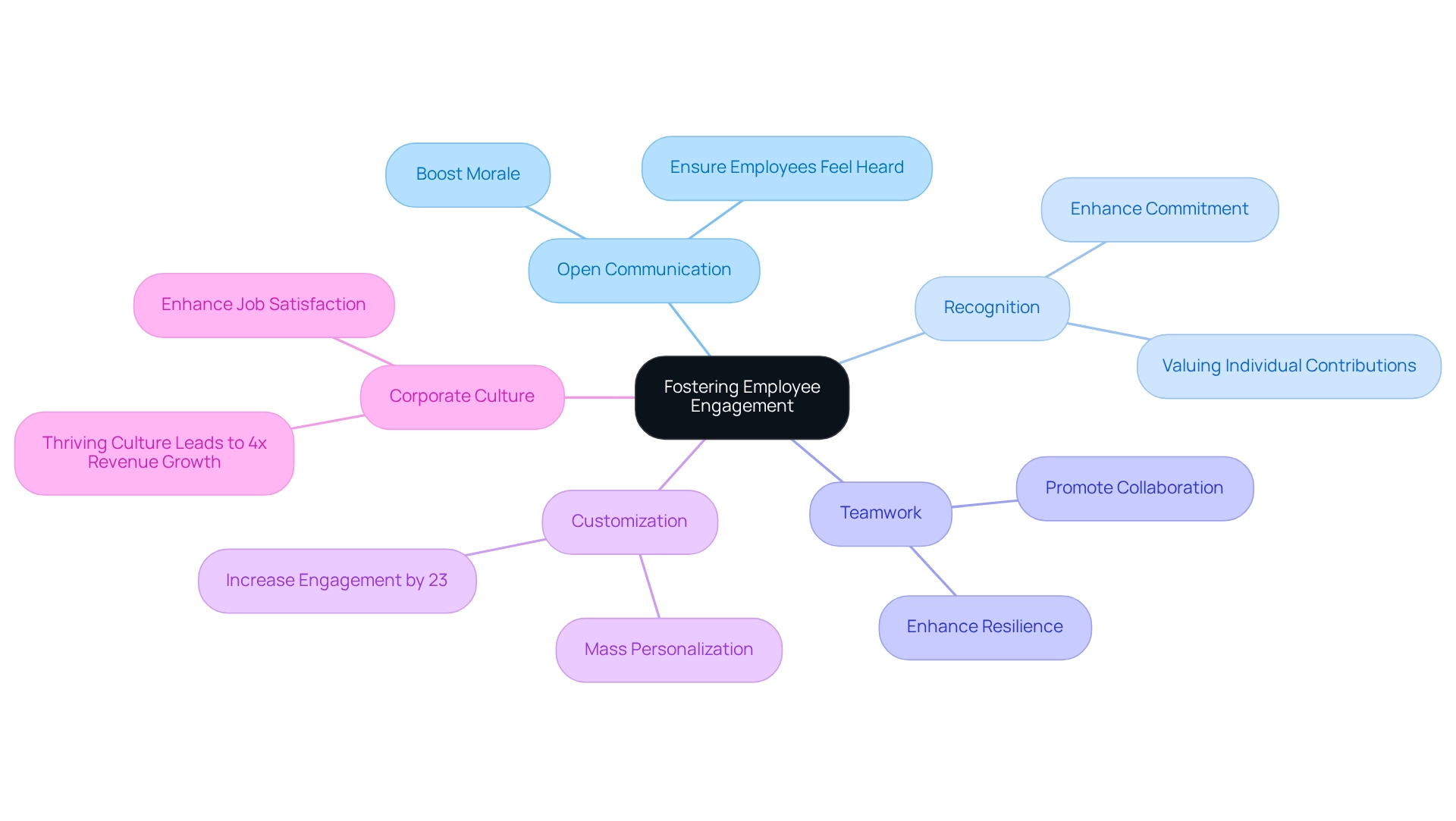
Monitor and Evaluate Crisis Management Strategies: Ensure Effectiveness and Adaptability
Observing and assessing emergency management approaches is crucial for guaranteeing their efficiency and flexibility. Organizations must establish specific metrics to evaluate the success of their response efforts, enabling them to pinpoint areas for improvement. Frequent evaluations and exercises are essential; they not only enhance strategies but also equip teams for upcoming challenges.
By utilizing real-time analytics through a client dashboard, organizations can continuously track their performance and make informed decisions swiftly, thereby improving their capacity to address challenges. For instance, NASA's strategy for handling emergencies illustrates the importance of ongoing enhancement, as they integrate lessons learned from previous occurrences to improve readiness and ensure astronaut safety. This proactive stance significantly boosts resilience against similar challenges.
Moreover, companies that consistently assess their emergency response initiatives indicate a 30% greater success rate in overcoming challenges, underscoring the significance of setting clear metrics for evaluation. As Judith A. Hoffman aptly states, "Communication is not just part of the emergency response strategy, it is the emergency response strategy."
By concentrating on distinctive measurements pertinent to their particular sector and objectives, organizations can efficiently track and assess their response plans. Additionally, conducting regular drills and simulations will enhance practical application and readiness.
In summary, CFOs ought to focus on setting clear benchmarks, engage in ongoing enhancement practices, and conduct regular training to ensure their emergency response plans remain robust and adaptable in 2025 and beyond.
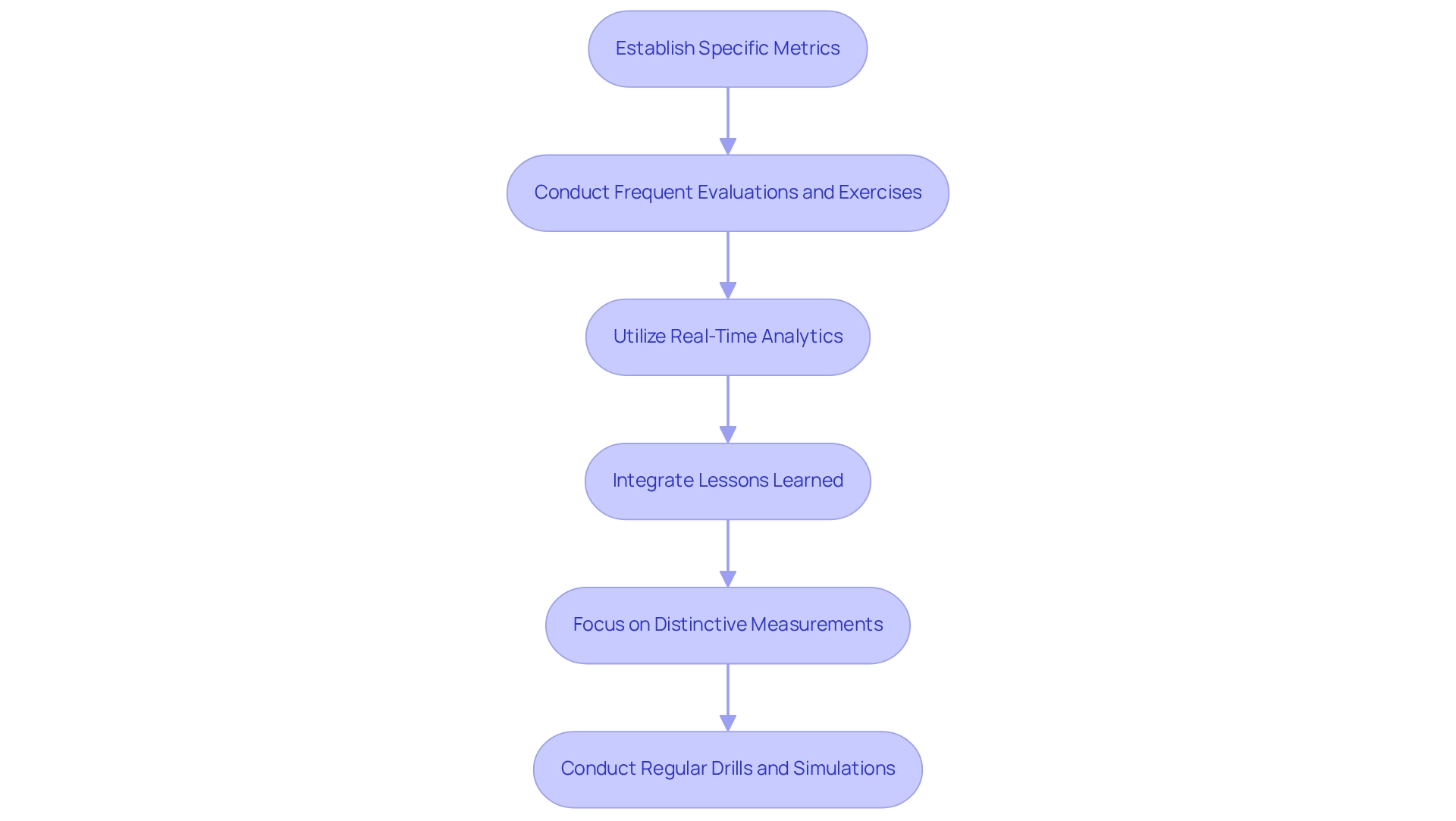
Learn from Past Crises: Enhance Future Resilience and Response Strategies
Gaining insights from previous challenges is essential for enhancing future resilience and improving response strategies. Organizations must prioritize comprehensive evaluations after emergencies to assess both successful and unsuccessful aspects of their response efforts. By meticulously recording lessons learned and incorporating these insights into emergency response plans, organizations can significantly enhance their readiness for upcoming challenges. This reflective practice fosters a culture of continuous improvement and equips organizations to adapt and thrive in an ever-evolving landscape.
Statistics reveal that companies engaging in systematic evaluations post-crisis are better positioned to mitigate risks and seize opportunities, ultimately leading to sustainable growth. Moreover, insights from management specialists underscore that embracing evaluations can transform challenges into catalysts for innovation and resilience. By leveraging real-time analytics and streamlined decision-making processes, organizations can continuously monitor their performance and make informed decisions swiftly, ensuring business value protection during turbulent times. Furthermore, experiences in confronting fear and managing risk illustrate how learning from previous challenges can enhance readiness and resilience. Crises can catalyze significant personal transformation, highlighting the potential for growth and change in organizations following a crisis. This is not merely an observation; it is a call to action for organizations to commit to ongoing evaluation and learning, ensuring they emerge stronger from adversity.
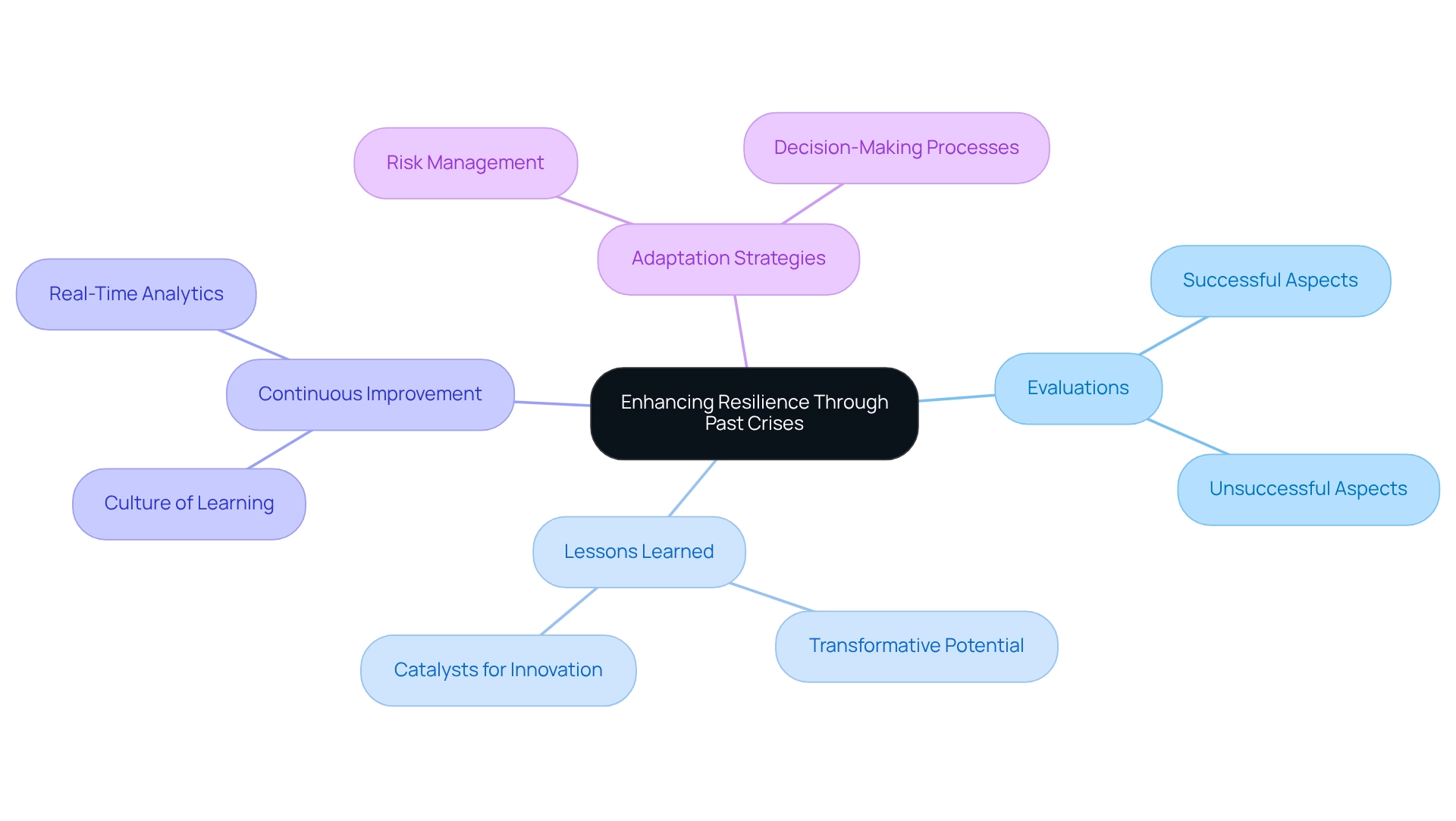
Conclusion
In an era where uncertainty looms large over small and medium enterprises, the significance of comprehensive crisis management consulting cannot be overstated. By harnessing strategies that focus on financial assessments, interim management, and robust communication, businesses can effectively navigate immediate threats while laying the groundwork for long-term resilience. The proactive measures discussed throughout this article emphasize the necessity of tailored solutions that address unique organizational challenges, ensuring that businesses not only survive but thrive amidst adversity.
Key elements such as strategic crisis management plans, the integration of technology solutions, and a commitment to employee engagement create a multifaceted approach to crisis readiness. These strategies not only bolster operational efficiency but also foster stakeholder trust, which is crucial during turbulent times. Moreover, the importance of learning from past crises further highlights the need for continuous improvement, enabling organizations to adapt and refine their approaches in the face of future challenges.
Ultimately, the path to resilience is paved with informed decision-making, effective communication, and a willingness to embrace change. As the business landscape continues to evolve, those enterprises that prioritize crisis management will be better equipped to withstand disruptions and capitalize on new opportunities. Embracing these comprehensive strategies today sets the stage for a more secure and prosperous tomorrow.
Frequently Asked Questions
What is crisis consulting and why is it important for small and medium enterprises?
Crisis consulting is essential for small and medium enterprises facing unforeseen challenges. It helps organizations identify vulnerabilities and implement customized strategies to protect business value, ensuring a proactive response to emergencies and fostering long-term resilience.
How can organizations benefit from collaborating with seasoned advisors?
Collaborating with experienced advisors enhances operations and emergency preparedness. It provides invaluable insights, improves teamwork during crises, and facilitates better decision-making through cross-functional collaboration.
Can you provide an example of effective emergency response strategies?
A case study involving a gubernatorial candidate demonstrated that effective emergency response strategies, such as focused communication and stakeholder engagement, can stabilize approval ratings and reshape media narratives, leading to successful outcomes.
What is the 'Rapid30' plan and how does it help businesses?
The 'Rapid30' plan is a strategy designed to quickly identify issues and implement solutions. Clients have reported significant improvements in their financial and strategic positions shortly after engaging with the consulting team.
Why are thorough financial evaluations crucial during crises?
Thorough financial evaluations are vital as they involve analyzing cash flow, identifying unnecessary expenditures, and evaluating liabilities. This process helps organizations maintain essential cash reserves necessary for operations during challenging times.
How does proactive financial oversight benefit organizations?
Proactive financial oversight enables organizations to adapt quickly to changing circumstances, enhances overall solvency, and ensures adequate cash flow, particularly during difficult periods.
What role do interim managers play during crises?
Interim managers provide essential guidance to stabilize operations by making swift, informed decisions. Their expertise not only improves operational efficiency but also instills confidence among stakeholders and employees.
What are the advantages of hiring interim managers compared to permanent hires?
Interim managers are a cost-effective alternative to permanent hires, typically charging daily rates between 1,000-2,000 euros. They deliver immediate expertise while helping sustain cash flow and protecting business value.
How does Transform Your Small/Medium Enterprise support businesses during crises?
Transform Your Small/Medium Enterprise offers comprehensive turnaround and restructuring consulting services, including interim management, financial evaluations, and bankruptcy case coordination tailored for small to medium enterprises.




